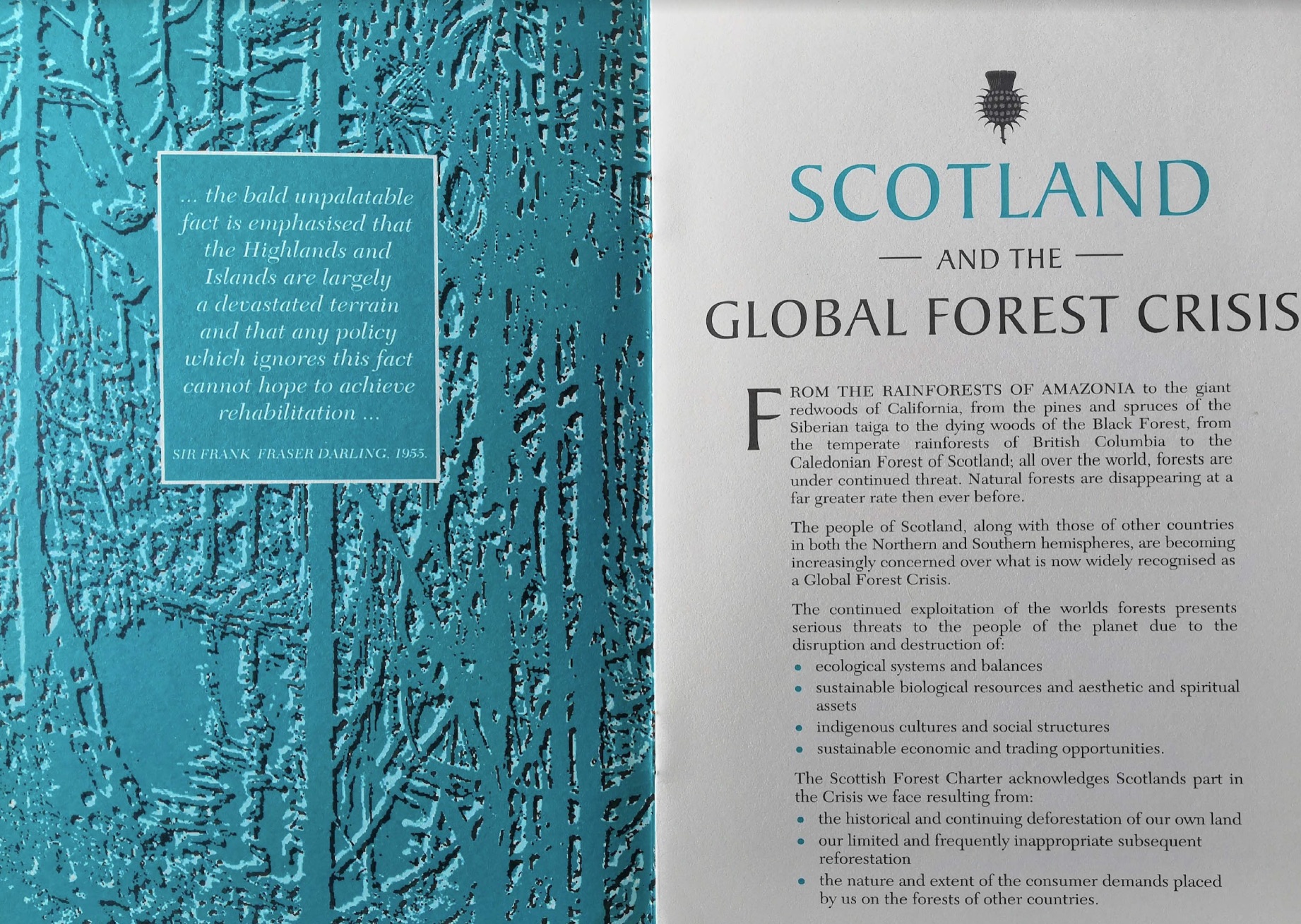The Rio Earth Summit & the Scottish Forest Charter

Thirty years ago, from 3-14 June 1992, countries met in Rio de Janeiro at the ground-breaking Earth Summit. The conference agreed the Rio Declaration on Environment and Development, Agenda 21 and the Forest Principles. The conference also agreed two legally binding treaties, the Convention on Biological Diversity and the Framework Convention on Climate Change. Despite these agreements, progress on securing the future of the planet has fallen way short of the ambitions of those who gathered in 1992.
For example, the majority of global greenhouse gas emissions ever released into the atmosphere have been emitted SINCE the Climate Change Convention was signed in 1992 (see image above) Although rates of deforestation have slowed since 1992, deforestation remains a significant global phenomenon (see image below).
 Graph from FAO, State of the Word’s Forests 2020
Graph from FAO, State of the Word’s Forests 2020
As part of an international coalition of NGOs concerned with deforestation in the North, Reforesting Scotland published the Scottish Forest Charter (6.6Mb pdf) in association with The Ecologist magazine. We used it to lobby world governments at Rio and to highlight the role played by northern countries in historic (and continuing) deforestation. I was empoloyed by Reforesting Scotland 1990-1993 and continued as its voluntary International co-ordinator for a further two years. Thirty years on, it is instructive to read the Charter and reflect on the extent to which its ten principles have been implemented in Scotland.
 Opening pages of the Scottish Forest Charter
Opening pages of the Scottish Forest Charter
We called for expansion of Scotland’s forest cover to deliver primary objectives of protecting soils, water, biodiversity and climate and a series of secondary goals including timber production, recreation and spiritual values. We called for
- a resource owned and managed by local businesses, communities and individuals
- that delivered a wide range of local benefits
- a radical increase in timber production and,
- effective carbon management and budgets.
Reading through the Charter today, thirty years later it is evident that we remain a long way from realising its ambitions. Deforestation continues even in our National Parks (see below) and forestry expansion remains dominated by external capital encouraged and supported by generous Government grants and tax breaks.
 Deforestation and soil erosion in the Loch Lomond and Trossachs National Park on an estate in receipt of Scottish Government agricultural subsidies. Photograph taken March 2019.
Deforestation and soil erosion in the Loch Lomond and Trossachs National Park on an estate in receipt of Scottish Government agricultural subsidies. Photograph taken March 2019.
With official Government ambitions to increase forest cover in Scotland, it remains deeply concerning that management such as that pictured above continues across vast areas of Scotland and that new forest resources remain dominated by absentee investors and corporations.
If you are interested in how we could achieve the scale of reforestation needed (40% by 2040) as opposed to the current target (25% by 2050), have a read of the Woodland Nation report (3.7Mb pdf) I commissioned and published in 2021. Sub-titled “pathways to a forested Scotland owned by the people” it is the most ambitious programme of land use transformation for people, the climate and the economy ever published. I will be blogging more on this in future.
Meanwhile I hope you enoy reading the Scottish Forest Charter.